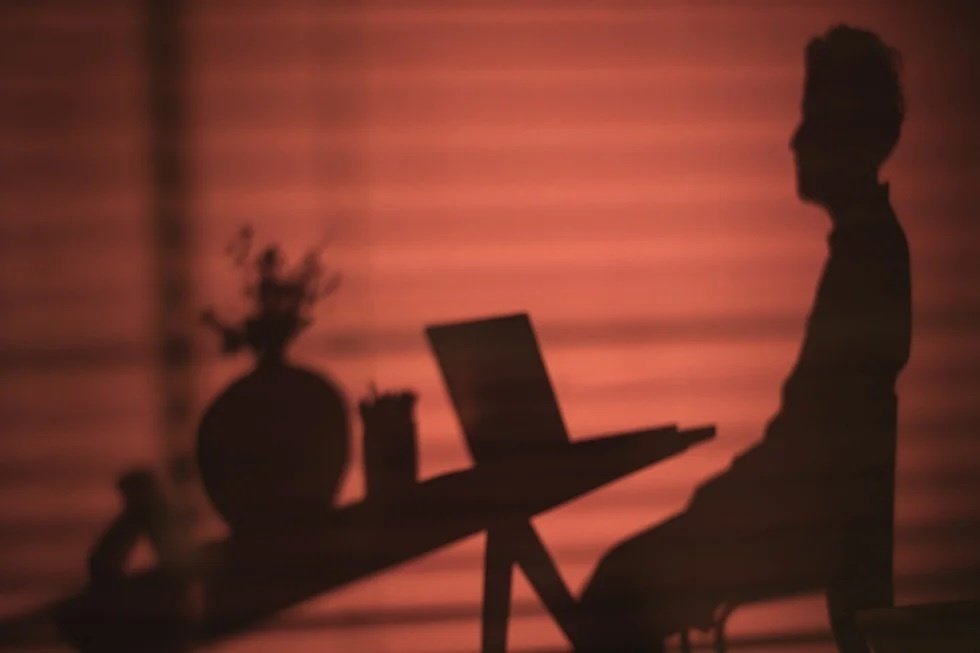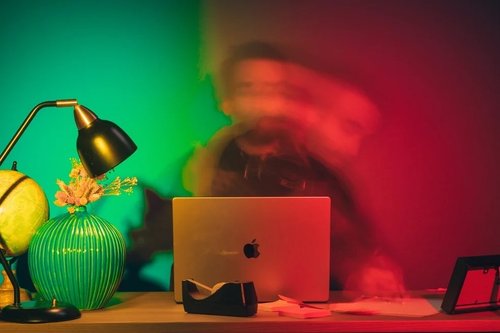The future is flex office: The evolution of our workplaces
06 jun 2024
7 min

Remember the days of commuting for over an hour in traffic, crammed into crowded trains, dressing in uncomfortable business attire from Monday to Friday, and sitting in a noisy cubicle under fluorescent lights for eight hours a day? That time has become a distant memory as the future of office work is rapidly evolving. The COVID-19 pandemic has irrevocably altered the work landscape, pushing the traditional office environment into a state of flux.
According to the Pew Research Center, 35% of US workers with jobs that can be done remotely now work from home all the time, while 41% follow a hybrid schedule. In New York City, the Partnership for New York City reports that only 8% of Manhattan office workers are in the office five days a week, with 78% of employers vouching to adopt hybrid work models post-pandemic.
These changes are not only redefining how and where we work but also challenging the traditional concepts of office spaces and their purposes. As businesses and employees navigate this new terrain, the question arises: what will the future office look like? To explore these evolving trends and explain how we can productively move forward from the traditional 9-to-5, five-days-a-week office model is David Blay, our Lab expert in digital transformation. Among his many projects, Blay is a journalist, telework consultant, and founder of The Remote Work School in Tenerife, Spain.
The hybrid horizon
Looking ahead, Blay explains that flexible and hybrid work models will continue to dominate the employment landscape. “But that doesn’t mean it will be for everyone. There will be people who want to be in a common space every day because that’s the way they understand work. And others will need more freedom without being tied to a physical place.” However, Blay confirms that even among office loyalists, there are very few who don’t want any form of remote work for the sake of better work-life balance.
One key benefit of flexible work is the empowerment it provides to employees. Blay states, “We found that giving people the autonomy to manage their work schedules not only improved their job satisfaction but also led to better outcomes for the company. People feel trusted and valued, and that reflects in their work.” Adding, “This is the first time in history we have the technology to support flexible work, so we should use it to create happier, more productive work environments.”
Since 2022, employers have progressively been calling workers back to the office. A Pew Research Center survey found that among hybrid workers who are not self-employed, 63% say their employer requires them to work in person a certain number of days per week or month.
But even with this return to the office, we still have more freedom than before COVID-19. Before the pandemic, only about 5% of workdays were remote, which rose to 61.5% at the height of the pandemic in 2020 and has stagnated at around 29.5% since August 2022. With our newfound freedoms, what role does the office play in our work lives?
Redefining the office environment
The traditional office is undergoing a radical transformation spurred by the evolving needs and expectations of the modern workforce. As Blay asserts, “We need to redefine the office, just as we’ve redefined our homes.” Gone are the days of sterile, cubicle-filled offices. Modern office designs, according to Blay, will begin to cater to our personal lives. “If people want to go to the office, it will be because in the office, they can do the things that they have to do after leaving it.” Amenities such as gyms, healthy food options, child support facilities, and deep work stations are, according to Blay, integral to future office space.
Though the perks are a plus, it’s not the only thing that will bring workers back. “For people to want to return to the office, it has to be an inspiring place,” For Blay, his inspiration is the outdoors: “I prefer working from home, the beach, or a café because many offices don’t offer much inspiration. So what about the outside environment of the office? Are there trees or paths for walking?”
The social aspect of offices
Many young professionals have had mixed experiences with the shift back to the office. According to a 2024 Deloitte survey, approximately two-thirds of Gen Z and millennial respondents reported that their organizations have implemented full-time or hybrid return-to-office policies over the past year.
For some, returning to the office has fostered a greater sense of engagement and connection with their organizations and colleagues. Specifically, 26% of Gen Z and 28% of millennial respondents from the Deloitte Survey reported feeling more engaged and connected since returning to the office. Additionally, 24% of both groups noted the increased collaboration and social interaction in the office.
So, some of us still want that in-office socialization, and Blay agrees. “The office is a perfect place to socialize in several circumstances: if you are joining the labor market for the first time, if you don’t live in the city and your relationships are not close, or if a big part of your job is to understand what people need in your organization.”
Blay proposes some ideas to promote socialization in this new type of office:
- Create sports groups to practice together during working hours
- Create spaces for conversation beyond the day-to-day work to generate engagement
- Use the last hour of each day to have a drink together and discuss issues that may be common
- Generate cross-department collaboration by sharing projects
- Encourage mentorship programs to understand the company’s purpose and create intergenerational bonds
Blay suggests incorporating individual wants of work-from-home with their needs for socialization and collaboration: “Maybe the office should be a place to socialize rather than just work, where disturbances are common,” he says. Employees could then have flexible schedules to perform their deep work in environments that suit them best while also fostering a sense of community and teamwork.
He adds, “This balance is essential, but not all work can be done remotely. Hence, the need not only to implement hybrid work but also to understand who needs it and to what extent daily. A general rule that mandates two days of teleworking and three in the office is insufficient. Managers must know their teams and define who needs to do what in each circumstance.”
What to do with all these empty offices?
As remote work becomes more prevalent, the issue of vacant office spaces is increasingly prevalent. Blay highlights this trend: “In Europe and the United States, there’s a problem where people can’t afford to live in the city due to high costs.” One potential solution, he suggests, is repurposing these empty offices into residential or mixed-use spaces. Converting these buildings into residential units could help mitigate the housing crisis by increasing the supply of affordable housing.
For example, New York City Mayor Eric Adams has proposed changes to zoning laws to facilitate such conversions, potentially creating homes for as many as 40,000 New Yorkers over the next decade. In addition to New York, cities like San Francisco and Chicago are exploring similar initiatives. With its high vacancy rates, San Francisco is particularly suited for such conversions. The city’s approach could serve as a model for other tech-driven urban areas facing similar challenges.
Not only does transforming empty offices into housing make cities more livable, Blay says, but more workable as well. “We’re not just talking about office retention, but also about the number of hours lost each year simply due to commuting: sleeping less, generating stress from traffic jams or delays in public transport, and morning crowds, not being able to take the kids to school, or having to allocate time for exercise or leisure at very early or late hours,” he adds.
However, repurposing office buildings into residential spaces involves several challenges, including structural modifications, regulatory hurdles, and ensuring the availability of essential amenities like grocery stores and hospitals. However, Blay believes that the new population pressures in areas that previously catered to workers could solve the essential amenities problem on its own—with more residents comes a new market for these services.
Is the 15-minute city the answer to all our needs?
The 15-minute city is an urban planning concept aimed at creating self-sufficient urban areas where residents can access most of their daily needs within a 15-minute walk or bike ride from their homes. Central to its model is providing essential services such as grocery stores, schools, healthcare, parks, and workplaces within a short distance from residents’ homes. This idea promotes a more sustainable, livable, and community-focused urban environment. And Blay wants more of them.
Originating in Paris under the leadership of Mayor Anne Hidalgo, the 15-minute city concept is transforming how urban spaces are designed and utilized. Other cities around the world are also exploring this concept. For instance, Melbourne has adopted a similar model known as the “20-minute neighborhood.”
Implementing the 15-minute city model in US cities could significantly improve urban living. Blay highlights the importance of adapting urban models to local contexts: “In Spain, many cities were small in the past and have grown into larger neighborhoods where everything is within walking distance—supermarkets, green spaces, schools, cinemas…” This model, he suggests, could be adapted to improve the quality of life in US cities and reduce empty office spaces.
America’s reliance on automobiles is excessive. As of 2022, over 285 million vehicles were registered in the United States, contributing to an astonishing 3.17 trillion vehicle miles traveled across the country. Maybe if we were less reliant on our cars, living closer to the office, we would be more inclined to work on-site? Come on, 15-minute cities!
Reimagining the workplace for modern needs
Blay says companies must define their strategies based on individual preferences and team dynamics. “Not everyone thrives in the same environment. For example, in flex or hybrid models, some employees require quiet for deep creative work, which they might find at home rather than in the office,” he explains. “So talk to your teams and understand their needs. It’s about finding what works best for each individual while balancing company needs.”
Blay also highlights the broader implications of this flexibility: “We have the technology to work fewer hours than our parents, but we’re working the same or even more. Previous generations often grew up without seeing much of their parents because they were always working. Now, people realize that they don’t need to work as much.” So, should the office be reinvented to suit our modern needs? Probably.
Photo: Thomas Decamps for Welcome to the Jungle
Follow Welcome to the Jungle on Facebook, LinkedIn, and Instagram, and subscribe to our newsletter to get our latest articles every week!

Más inspiración: Future of Work

From battlefields to bad bosses: Fostering resilience in the workplace
From fighting Boko Haram to surviving Silicon Valley, Air Force general and tech entrepreneur Mandy Birch talks about where resilience comes from.
26 jun 2024

Can companies avoid a brain drain as retirements surge?
Bye bye, Baby Boomers. Hello, knowledge exodus?
12 jun 2024

The distraction dilemma: How to navigate a workforce with shrinking attention spans
Our digital workplace makes it difficult to resist distraction, and the constant barrage of notifications has impacted our attention spans.
04 jun 2024

Why your vote matters: The impact of worker activism on historic labor legislation
Workers remain the catalyst for legislative labor reform. Discover the history behind how your vote impacts the workplace.
29 may 2024

Is a world without work (really) possible?
Our Lab expert Laetitia Vitaud explains why she doesn’t believe in a future of unemployment and leisure.
19 feb 2024

¿Estáis orgullosos de vuestra cultura empresarial?
Dadle la visibilidad que merece.
Más información sobre nuestras soluciones

